

content Tableof

townhouse in sài gòn
The place that emphasize the past of SaiGon while being equally modern.
apartment in sài gòn
Residential buildings in SaiGon with a long history.
living rhythm
Despite residing in various locations, a comfortable life may be had anywhere.

house boat in sài gòn
The house along the river still has its unique charm, unlike other dwellings.
Townhouse
Where Modernist Architecture Meets Vietnamese Identity to Discover the Living Legacy.

With the winds of change and cultural advancement, Vietnam’s architectural landscape has seen a great transformation, moving away from the legacy of French colonial influences and tradition home shapes. A testament to this development is developing in the sector of modernist architecture, which was well received by the Vietnamese human during the second half of the 20th century. During this time, there has been a lot of change, and traditional ideals and modern aspirations have clashed to create a unique architectural tapestry that is also deeply rooted in cultural past.
The modernist style of building came into existence in Vietnam at a period when the nation was looking for a dynamic balance between the past and the future, as opposed to architecture or traditional Vietnamese dwellings. Vietnamese society made effort to reflect its aims and aspirations in the built environment during a period of rapid urbanization and social transformation. As a result, buildings began to appear that were more than simply bricks, mortar and reflected a culture adapting to new needs.
It becomes the family’s retreat as you ascend. Private homes are located below and public spaces are located above in Vietnam’s social structure, illustrating this change. Every floor contributes to daily life in a way that fosters harmony with the bustling city.
The uppermost tiers of these structures are where they are strongest. Concrete sunshade systems are purposely included into these places as a practical and elegantly designed solution. These sunshades are more than just decorative additions; they demonstrate the architect’s skill.
The townhouse in the city of Saigon is essentially a modern building of living museum. Over the course of its history, the city has preserved a large number of historic sites as outstanding illustrations of its innovative spirit. These historical buildings exhibit how the cutting-edge of architectural concepts may be

The Ancient Saigon’s architectural construction is a product of several historical eras.
During the period of French colonial influence, spanning an extensive era, European architectural styles left a profound imprint on the architectural fabric of Saigon. The touch of the French can be seen in every architectural creation of that epoch, and each structure boasts its own unique characteristics.These designs are replete with intricate wooden doors, elegantly crafted louvre windows, and thoughtfully designed enclosed corridors, ingeniously shielding against both rain and excessive light while facilitating optimal ventilation.Additionally, the incorporation of lofty ceilings complete with well-placed vents stands as a hallmark of the architecture that graced Saigon before the pivotal year of 1954. This distinctive sequence of regional adaption and European influence creates an engrossing story of the city’s architectural and historical development.

Period
1960 1975
Vietnam’s architectural identity miraculously maintained its own character despite the intricate interaction of American power and wartime hardships. A notable accomplishment during this time period was the use of building materials like concrete and washed stone, as well as the incorporation of flatroofed homes. Vietnamese architects demonstrated their talent, bringing new concepts to life as creative architectural styles started to take hold. These materials’ renewed popularity resulted from their intrinsic benefits, which contrasted with the ingrained principles of the French architectural style.This revival wasn’t just functional; it marked a change in mindset and an acceptance of pragmatic functioning that was in line with the changing demands of the country. That period became known as a turning point and a
Saigon’s Townhouses Where the Modern Vietnam’s Heritage.
Period
Until the 1990s, there emerged many constructions featuring inconsistent architectural styles. The influence of foreign architectural cultures and the individualistic nature of homeowner design preferences are reasons behind the diverse architectural forms in Saigon. This complexity poses challenges in achieving architectural coherence in planning as well as expressing a distinct

Source: Internet
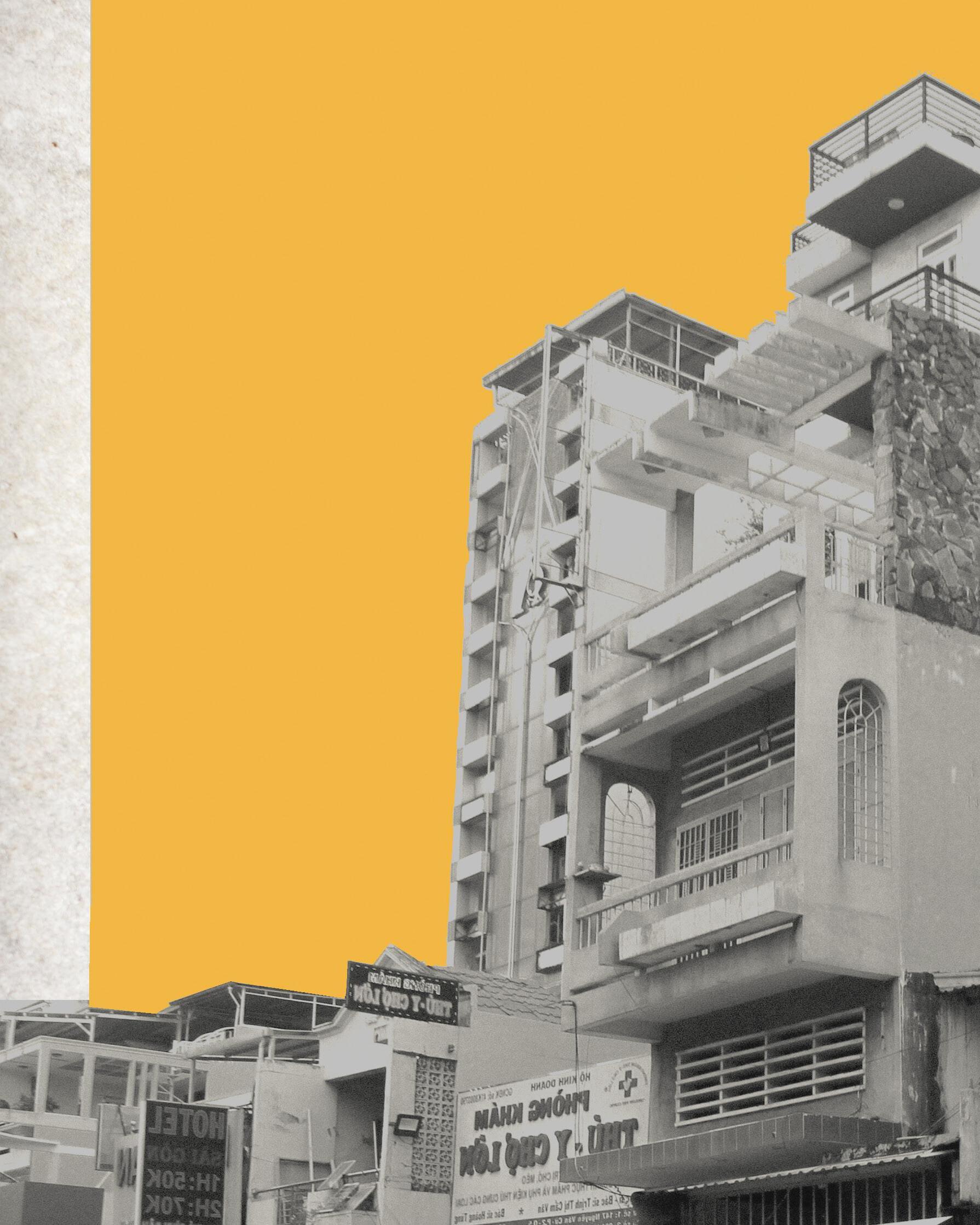
The Architectural style commonly found in Ho Chi Minh City nowadays.
Modern Architecture

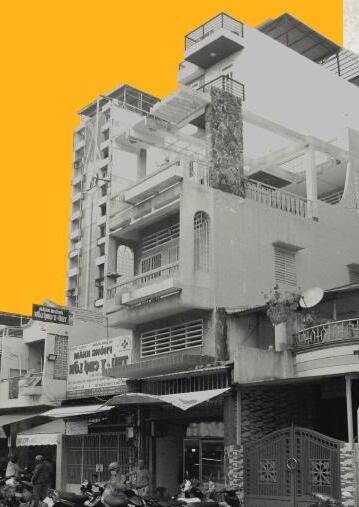
The modern architectural style, originating from Europe in the late 19th century, represents a breakthrough in both ideas and a symbol of openness to innovation in the field of construction. The design philosophy of modern architecture is to serve the space needs of the inhabitants. The hallmark of modern architecture is manifested through simplicity in design, with each part of the structure serving a specific function, minimizing the use of construction materials, and simplifying decorative details.
Neoclassical style Architecture
When creating opulent homes and townhouses, this architectural style is very popular. Give your house a timeless, contemporary style. The Neoclassical style is the oldest still in use, especially in an era when many architectural trends come and go or do not have widespread adoption. The advantages of the neoclassical architectural design style are appropriate for the overall aesthetic of many different eras and places. The homes in this architectural style frequently have enigmatic beauty, with delicate but tasteful embellishments and the straightforward color of white.
Bringing the outside inside
In order to create suitable living spaces in the city, Ho Chi Minh City’s current housing projects and private villas frequently have water features like lakes or green spaces developed nearby. this city’s crowded population. A particular architectural style is used when designing houses for projects. helps to improve the owner’s quality of life by increasing the aesthetics and making sure practical and utility elements are there.
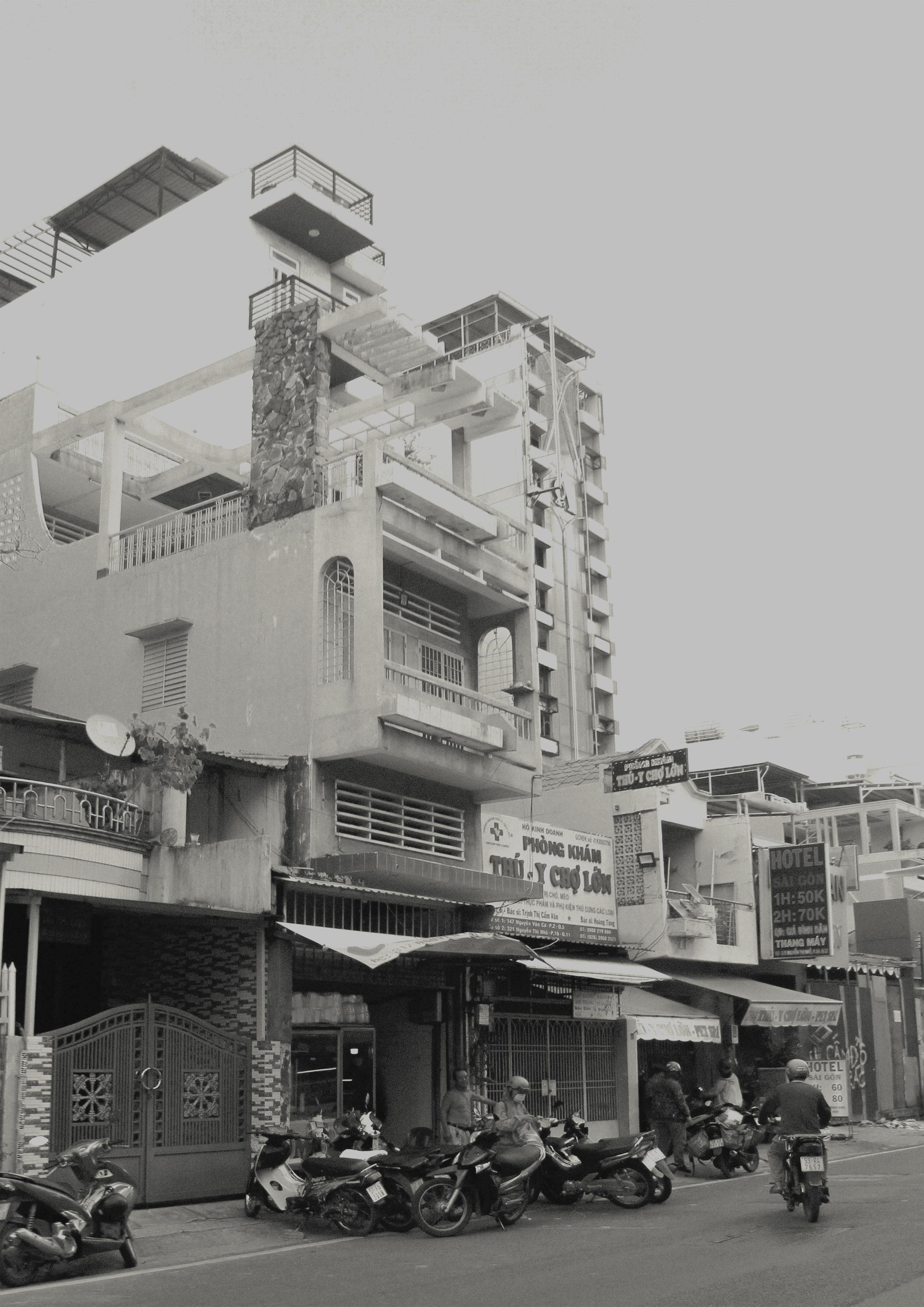
Apartment in sài gòn
Journey to Saigon’s Old Apartments Reveals Nostalgia in the Face of Urban Evolution.
Century-old apartment buiding that have withstood the test of time stand in striking contrast to Ho Chi Minh City’s busy and lively core. These dilapidated buildings, with their weathered facades and faded exteriors, serve as witnesses to time and the development of a city. A tapestry of life tales weaves together human experiences that span generations and include a variety of emotions, from joy to grief, within the walls of these ancient, small, and worn homes.
Residential complexes had their origins at a time before 1975, when Vietnam was about to undergo major changes. Since then, decades have passed, leaving their stamp on these structures. The interiors have withstood the ravages of time and use, and the once-sturdy facades have been developing a weathered patina. Nevertheless, these buildings make up for any visual shortcomings with their history and personality.
A world of mystery is waiting as soon as one enters these dilapidated apartment buildings. The architectural style, which has French elements, is a relic of a bygone time.
The delicate details that are still present show a time when a focus on aesthetics was an important aspect of construction. Each step on the ornate cast iron stairs that meander through the structures is an echo of the footsteps that have gone up and down them throughout the years. Traditional patterned railings serve as a constant reminder of the creative sensibility of earlier generations with their graceful twists and bends. The wroughtiron elevator doors, despite displaying signs of wear, have withstood the test of time and offer a look into a time when form and function coexisted in perfect harmony.
These housing complexes stand in sharp contrast to the bustling metropolis around them in the eyes of many tourists. They serve as an effective reminder of the city’s past and architectural legacy. These old flats persist as staunch relics of an earlier time amid the modern constructions and developments that have surfaced recently. They provide a window into the past that enables us to see how people lived in an era ordinary living during a time when design sensibilities were different.
The instant one enters these structures, they are overcome with a wave of nostalgia. Despite showing signs of aging, the sturdy oak doors serve as quiet witnesses to numerous arrivals and departures, stories told, and secrets hidden. Each step on the dusty cement stairs narrates a story of a person who ascended them every day for a whole year. The intricate and exquisite little railings provide a touch of luxury to the mundane. The sounds of laughing, discussion, and footsteps that have long ago vanished may be heard in the winding hallways that are lined with walls that are fading colors of yellow.
These old apartment buildings stand as sad reminders of a time when life had a different pace and when communal relationships were fostered in shared spaces and close quarters in a city that is constantly changing. They provide as evidence of the tenacity of architecture as well as the steadfast character of a city that values its history as much as its present.
Exploring the Charismatic Allure of ancient Apartments in Saigon, Where History Meets Contemporary Living.

Amidst the vibrant pulse of Ho Chi Minh City lies a cluster of centuryold apartment buildings, standing as silent witnesses to the passage of time. Within their aged walls, a multitude of lives have unfolded – tales of joy and sorrow. These cramped and timeworn dwellings hold stories that tourists often perceive as melancholic notes within the city’s vibrant symphony. Bearing architectural echoes of the 80s and 90s, these apartments evoke nostalgia with their enduring wooden doors, staircases dusted with the traces of countless footsteps, and narrow passages reminiscent of days gone by. Visitors who wander through these hallways are taken back in time, where memories of the past reverberate in every creak and crevice, striking a dramatic contrast with the city’s busy present.
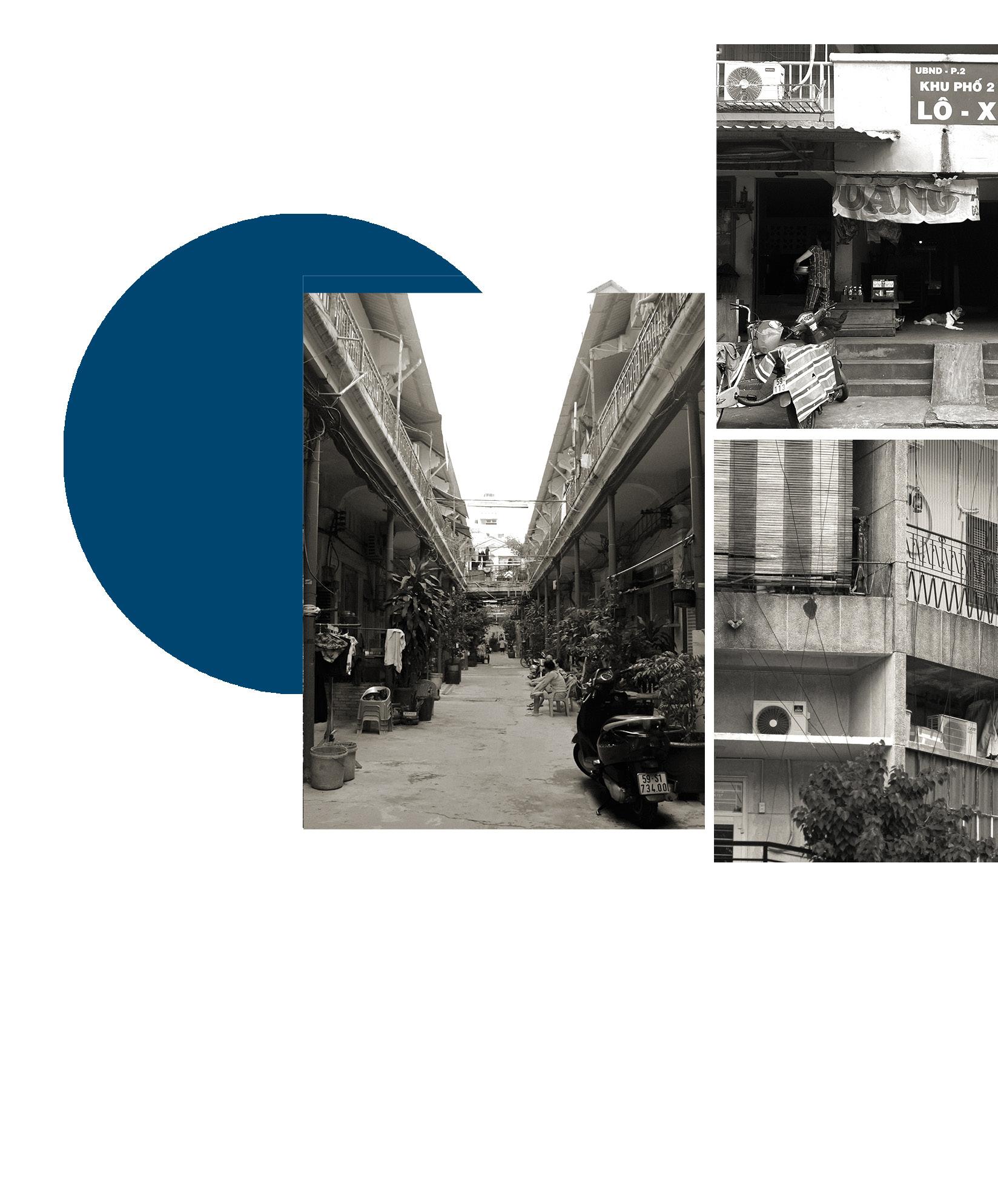
Ton That Dam
Nestled in a charming alley on bustling Ton That Dam Street, this unique apartment complex is surrounded by banks, colleges, and financial firms, maintaining an aura of tranquil antiquity that blends seamlessly with its surroundings. The passage of time has gifted its walls with a delicate mossy patina, bearing witness to its storied past. Architectural elements like graceful winding staircases enhance its character. Youthful energy contrasts elegantly with weathered rusted window frames, cracked wooden doors, and painted walls. With only a few shops and homes within, the complex offers an uncommon afternoon serenity—a perfect setting for focused work and creativity.
The apartments are ancient, yet they nevertheless have a certain beauty.
Hao Si Phuong Nguyen Dinh Chieu
It is well recognized that Hao Sifang Alley is a location rich in Chinese cultural identity. Chinese and Vietnamese people with Chinese ancestry reside here. In the middle of the city for more than a century, Hao Si Phuong alley has kept its original, brash Chinese-style architecture. Hao Si Phuong Alley is two stories of linked antique and modern architecture that is created in the manner of an old dwelling. The stairway arrangement connecting the floors is extremely distinctive and unlike Vietnamese architecture. You will see many aspects of Chinese culture when visiting Hao Si Phuong alley because it is currently an area where the Chinese and Vietnamese people coexist. Examples include red couplets and exterior altars. Visit Hao Si Phuong , a icon in Saigon’s spiritual culture, to learn more about Chinese culture.
The apartment is situated in District 1, a bustling and affluent residential neighborhood, 200 meters from Thi Nghe Bridge. There are also several facilities nearby, including bookstores, medical facilities, botanical gardens, colleges, high schools, pagodas, churches, stadiums, and banks. A one-bedroom apartment will be the perfect option for many groups of consumers looking for a place to live thanks to its small size but complete amenities, contemporary style, and affordable pricing. having a wish to live in a quiet, comfortable home.

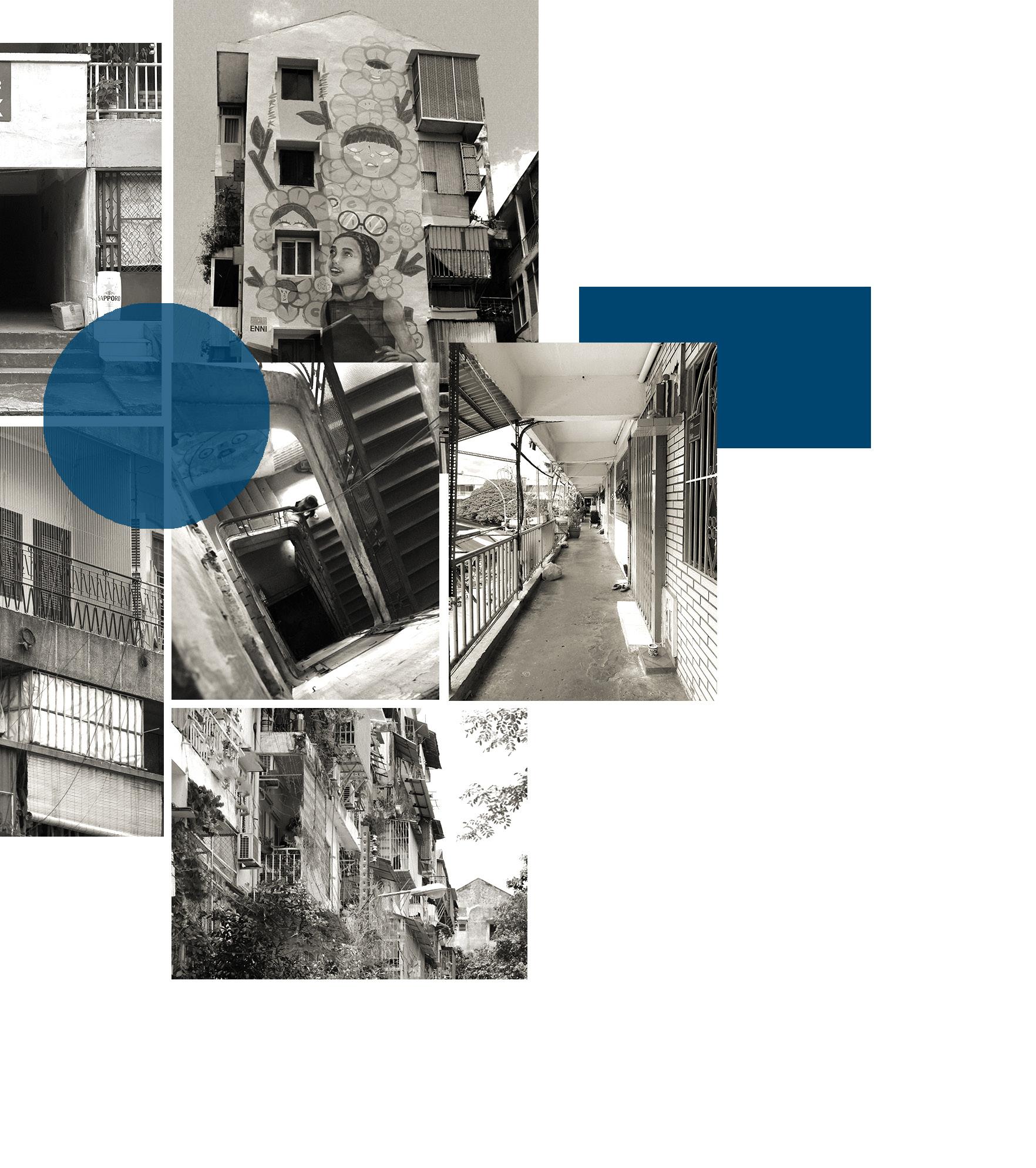
How things were a century ago
Only 60 homes make up this entire one ground floor, four story apartment building. Some inhabitants over the age of 90 must remain in one location, but the majority of the occupants have practically all gone on, leaving the property available for rent when a business fad hits. Since the 2000s, interest in “vintage” models has grown among young people.


“Gigo” cans from a century ago in apartment kitchens
There are very few original tenant units left on the first level of the Ton That Dam apartment complex. On the side of Ton That Dam street, it is a row of homes located beyond the entrance to the apartment complex. There are just around 5 homes remaining here, all of which are owned by people who have been raising their family for several generations. There are utensils from before 1975 in the little kitchen, including Guigoz milk cans, which the Saigon people dubbed “Gigo” cans and were a part of many generations of Southerners’ daily life before 1975. milk in powder Since it was so well-liked, nearly every middleclass Southern family at the time gave Guigoz milk to their kids. Guigoz cans were also used by the wealthy to keep valuable jewels, diamonds, and gold leaf. Until recently, women also retained these stainless steel milk cans to keep salt, sugar, or dry goods.
Source: Internet

History seems to pause in order to tell the tale of the old home and the elderly residents.
Houseboat in sài gòn
A struggling fishing community is presently hidden between busy streets and contemporary structures on the Saigon River in the Ward 13 area of Binh Thanh District. The fishing community is tucked away next to the old and new Binh Loi Bridge, its wooden boats anchored by a patchwork of tarpaulins and roofed with corrugated iron.

As per 82-year-old Ngo Thi Liem, the village’s eldest resident, the fishing community was established 38 years back. Before that, he and fellow residents from Vinh Phu migrated to the South in 1954, eventually settling in Moi village, now a part of the Vam Thuat river in An Phu Dong ward, district 12, where they practiced “smashing ha ba”. Post the 1975 liberation, they migrated to the vicinity near the Binh Loi Bridge to anchor their boats and continue fishing. The village used to be bustling, but today, many households have moved ashore, renting inns for accommodation. Only 3 households, totaling 8 people, remain in the fishing village, intriguingly all hailing from the same hometown with close familial ties. Notably, Mrs. Liem’s family boat, which was their home and fishing vessel .
The livelihood of the fishing village residents revolves around fishing in the Saigon River and its tributaries. Day and night, following the ebb and flow of the water, they row their boats along the river, sometimes venturing kilometers away to cast their nets and fishing lines. Their daily routine is intricately tied to these fishing tools. Their worries about meals, clothing, expenses, and medicine heavily rely on their catch. On average, each fisherman earns around 100,000 Vietnamese dong from selling fish per day, with luck granting up to 200,000 dong if they have a successful catch.
The riverfront fishing community is shaded by many trees, which makes the area comfortable cool. Visitors and villagers may both sit on boats directly above the water’s surface and take in the tranquil setting. However, the river may occasionally turn rather ferocious. The worst weather conditions we worry about with these little improvised boats are torrential downpours and severe winds. We occasionally have to abandon the boats in order to seek shelter ashore in surrounding homes owing to bad weather.
For around 40 years, a fishing village flourished in busy Saigon under the Binh Loi Bridge’s shelter.
Three families, each with eight members, make up this entire hamlet, and they are all united in their desire to go ashore and set up permanent houses. But the grip of poverty continues to be unrelenting. Because of our severe financial limitations, we are unable to pay the rent for adequate apartments. The Liem family has lived in this house for three generations, but their wish to relocate to the mainland has not been realized.
In this close-knit fishing hamlet, the residents forge strong bonds, sharing not only their daily sustenance but also a sense of solidarity in the face of ongoing challenges. Despite the trials that persist in their lives, these individuals stand united, drawing strength from their collective spirit. The fishermen’s demeanor remains consistently genuine, marked by their straightforward and unassuming manner.
Authenticity is a beam of light in this society, untarnished by artifice. People are drawn to them by their sincere interactions and modest demeanor, which creates a powerful appeal. This energy not only brings people together, but also radiates beyond their little town. People they encounter are inspired by and filled with appreciation by their modest, committed way of life. This enduring esteem highlights the lasting impression they have on people’s hearts and their thoughts.
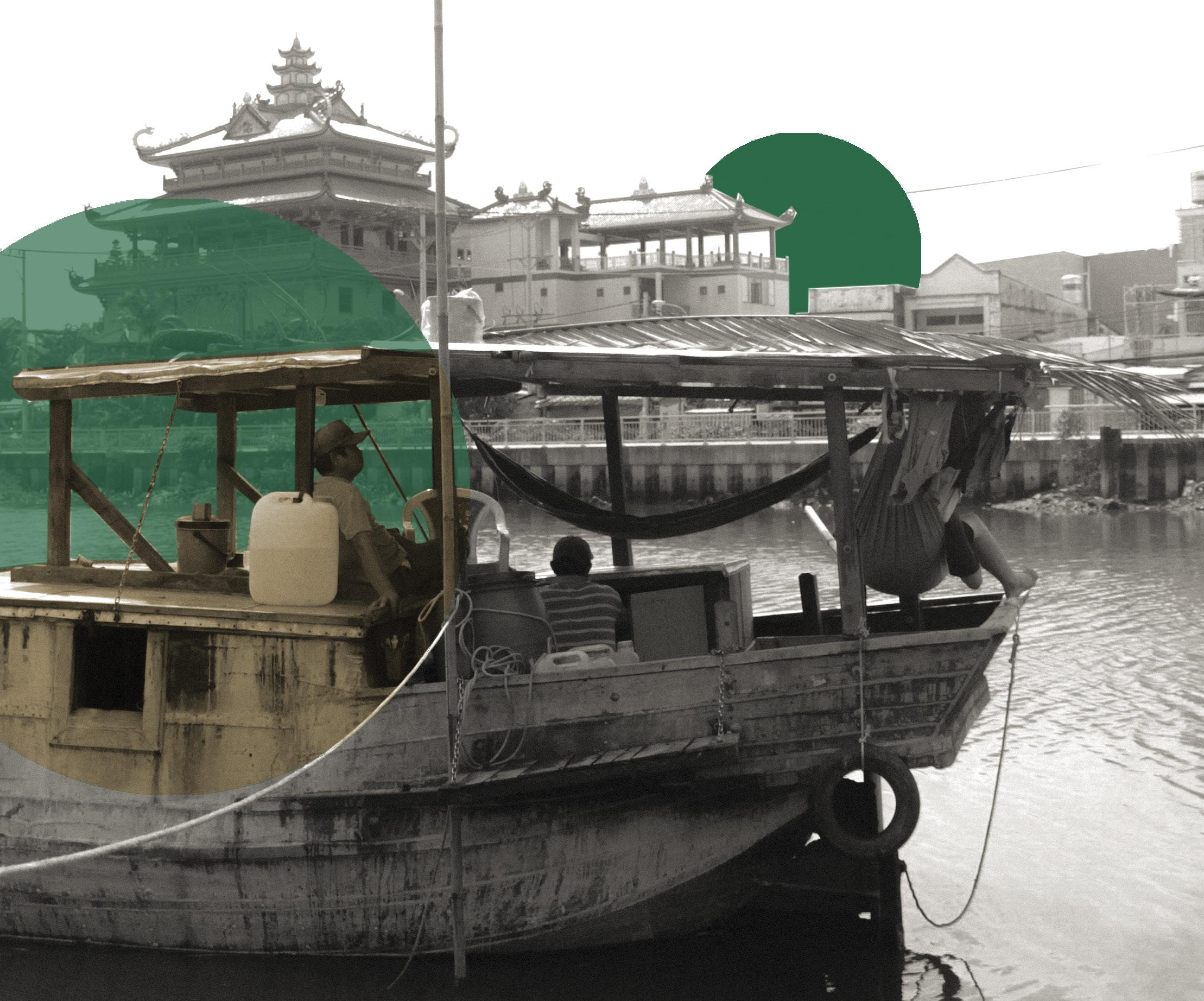
Source: Internet
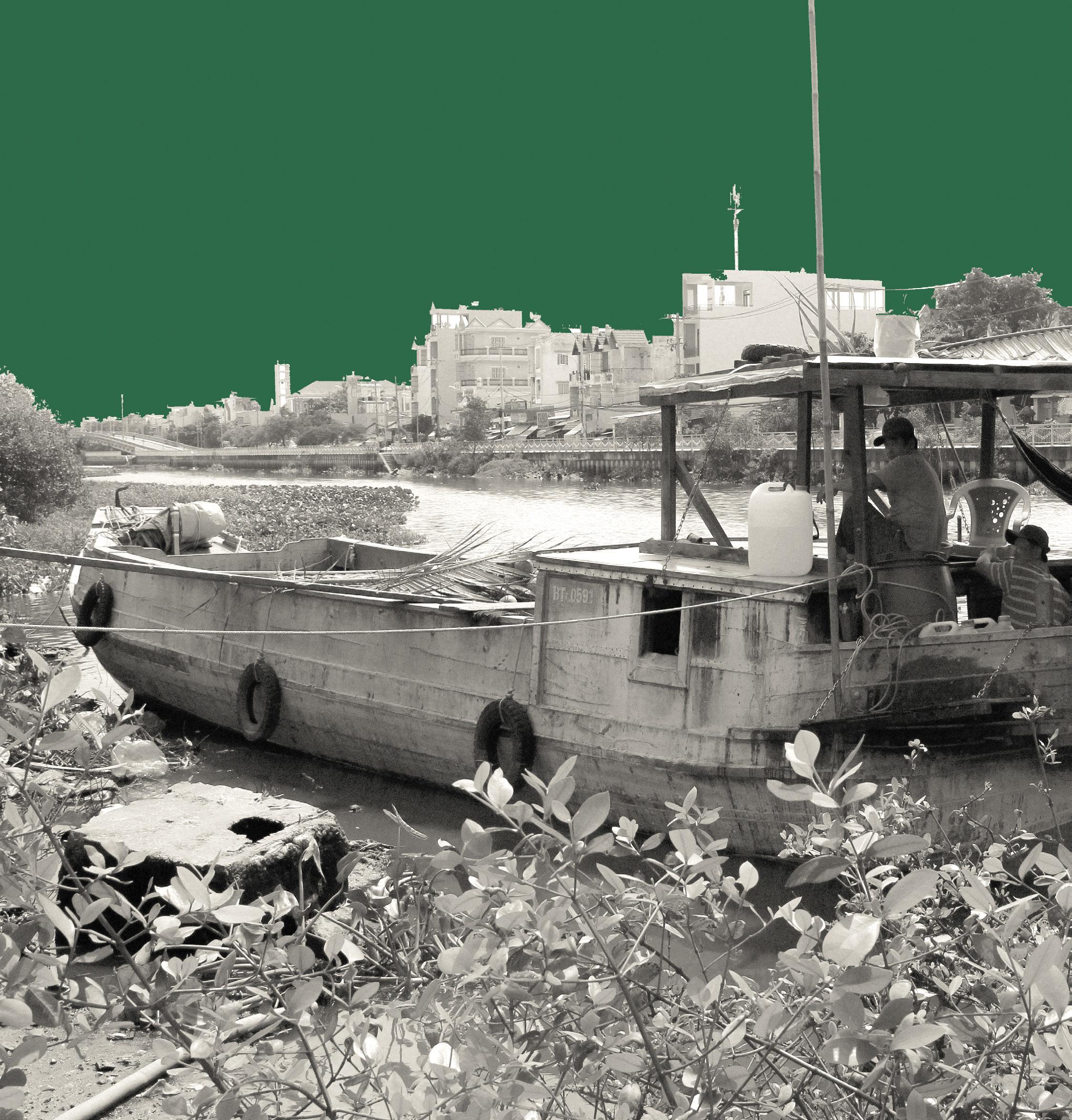
Sharing the stories about life aboard a boat
Nguyen Van Minh born in 1962
“
We followed our parents to roam about the river to drop nets; the river has long been stained with the blood of our siblings and sisters. The business of fishing on the river is a trade that is passed down from father to son. Life is still challenging despite the unstable nature of the money from this career, but it is uncompetitive. Although the river occasionally has large waves and the outside world is busy and noisy, our work and way of life are relatively tranquil.

Nguyen Van Chung born in 1964
“
Since my house has had power for four years, I have solely used light bulbs at night. It was incredibly lonely and depressing at night without power.
Nguyen Thi Hinh
For almost 40 years, she and her husband have maintained ties to the fishing community and have made friends with the Saigon River. The couple and their five daughters are fed by this river. Their children are now grownups who are married. After sticking with the river for a few years, that is the couple’s main solace.
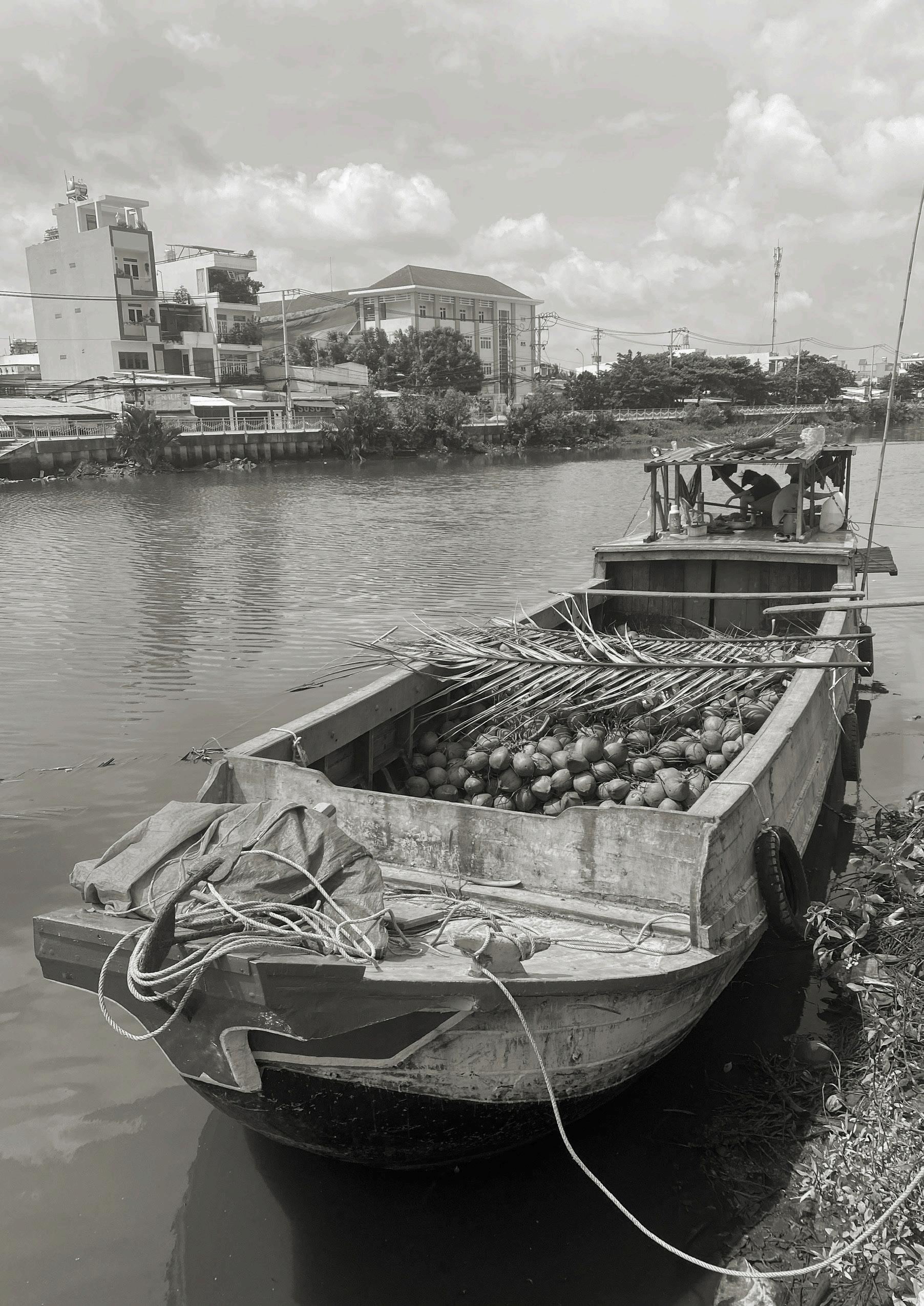
Living rhythm
The daily routine of residents in their own houses and areas in Saigon.
In contrast to what you could see when wandering the major streets, the alleys are the perfect area to people watch and witness the private lives of the inhabitants. Families eating together while seated on the floor with the front door ajar can be captured on camera.
People who live in neighboring houses may literally chat to one other across the street in certain alleyways because they are so small, eliminating the need for them to ever leave their homes. Watching people talk in that way is entertaining! Children may play and adults can exercise in the lanes, which are also utilized as a public yard.
Travelers who enjoy exploring new places and finding unusual details can never get bored in Saigon because to the endless lanes, which are attractions in and of themselves. Like Apartment, which offers services, stores, restaurants, and other amenities for people with slow feet who wish to stay somewhere for the day. There are two apartment complexes on either side and at the top of this lane.
There are two eateries, a great cafe, and two clothing stores nearby. There is a café operating daily in front of the alley. For local youth looking for a place to spend the evening with friends in Ho Chi Minh City, this is one of the most well-liked locations. The lane is home to several enticing Vietnamese eateries that are popular with visitors from abroad.
Five pagodas in the Go Vap District are surrounded by incense smoke. It is less than a kilometer long and has five temples. It’s sometimes referred to as “meditation” canyons. The main distinction of this alley is that it offers a calm setting, clean surroundings, and adequate ventilation.
Or the Flower Sidewalk, where Ho Chi Minh City’s biggest wholesale flower market is located. Located in district 10’s Le Hong Phong complex, Ho Thi Ky Flower Market is open twenty-four hours a day. You may observe the busy flower market scenario between customers and sellers from 1 am until 3 am.
Discounts offered by the vendors, gatekeepers’ enjoyment, and the motorcyclists’ “purr purr” sound all combine to provide a unique way of living under pressure that is unmatched by anything else in a lane market.
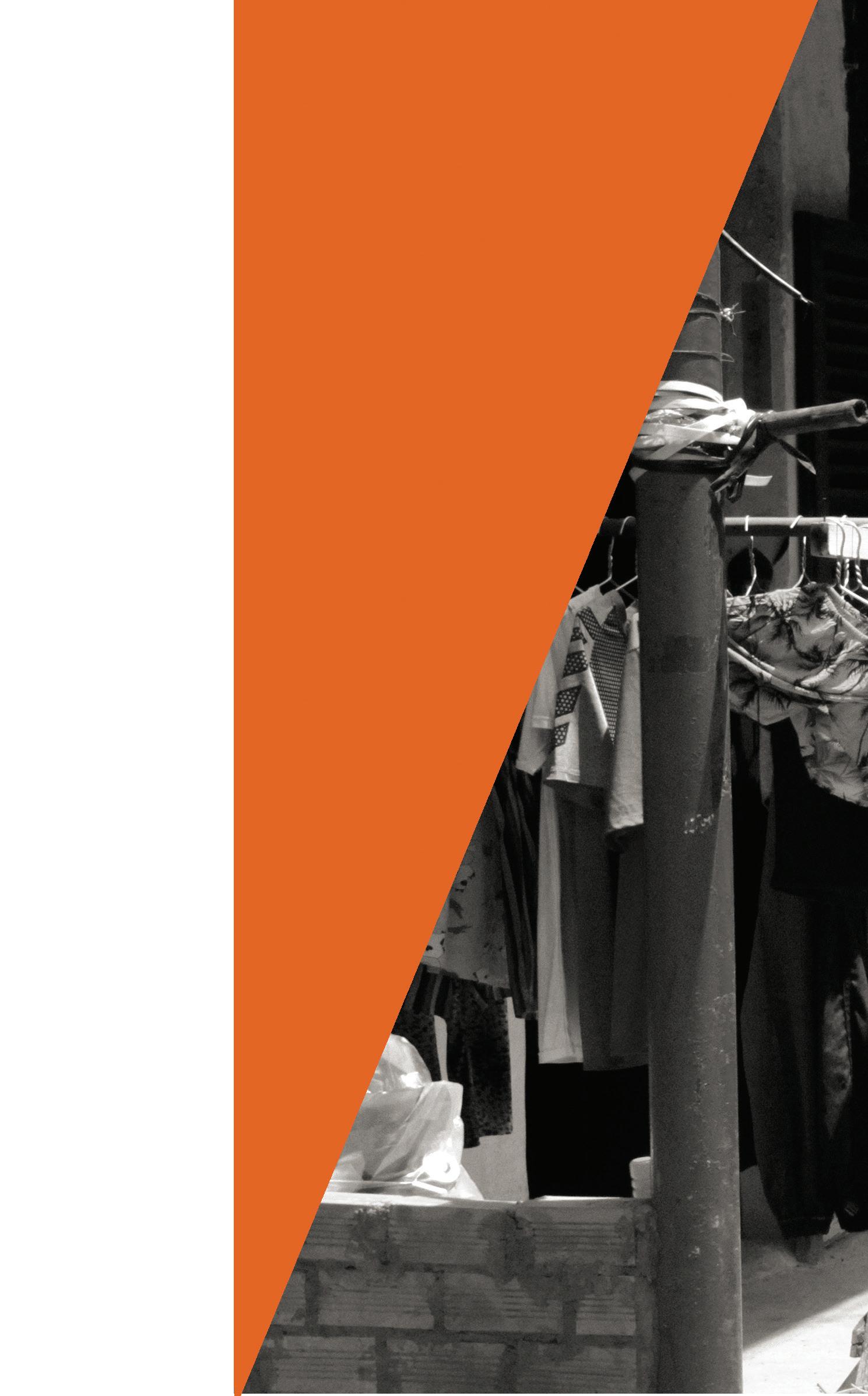
Family with several generations
Many grandparents, like a 100-year-old tree, continue to live contentedly with their offspring and grandkids, and 5, 7 families are still able to commute back and forth between little, worn-out apartments. Ms. Khong To Muoi, 76, has been residing in apartment 440 Tran Hung Dao for 111 years—the same amount of time as the apartment—along with her six children and three generations. Every evening, the elderly and grandparents congregate on chairs in front of the houses to talk, drink tea, and eat cake since the homes are always cheerful and the hallways are spacious. On the balcony or in the yard, kids are playing. When families exchange meals and visit pagodas together on New Year’s Day and throughout Chinese holidays, it is the most enjoyable. I don’t want to travel anymore since I’m used to it and have lived it.

In a little flat, several families
Modern families choose to live in high-class flats rather than townhouses because they still want the family to get together but also want to ensure that each member has their own private living area. There will be solutions that are suitable to fulfill this need for every single family trait.
Time seems to have stood still since the turn of the century in the century-old homes in Saigon today.
Apartment
Homeliness

People in Saigon are straightforward in their eating habits, clothing, and even how they treat one another. They don’t really care how you look, as long as you’re nicely dressed, save on rare occasions. While they do not use other people’s clothing as a barometer for other standards, they are not fearful of people judging them based on their appearance. Right is right, wrong is bad, nothing to say, no front and back, no irony and sarcasm, unlike the Hanoians who frequently choose complex and covert terminology. Simplicity in behavior.
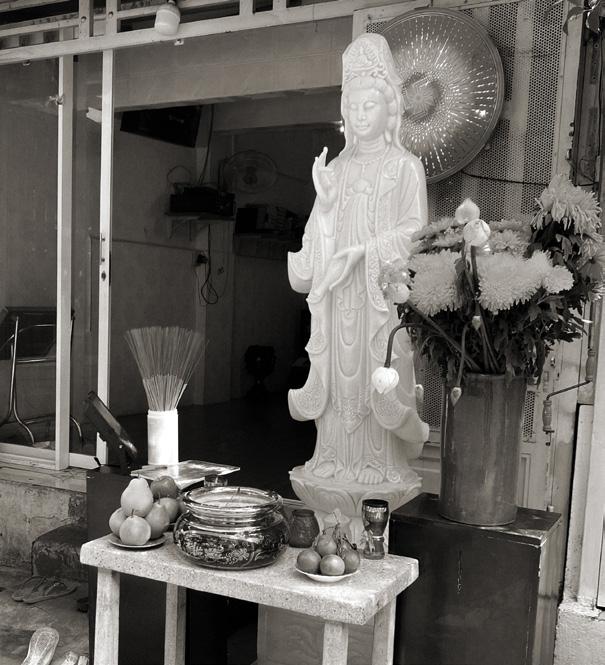
dwellers and those in the neighborhood make a constant effort to coexist.
Generosity


The Saigonians’ outward displays of warmth, generosity, and compassion have a big impact on how friendly they are at heart. Their acts of kindness are given freely, without any expectation of reward or reciprocation. Their interactions are marked by a strong feeling of regard for one another, which promotes peaceful cohabitation. When one visits this energetic city, these traits stand out even more. Everyday life is infused with the spirit of generosity, which shows up in sweetly simple ways. It’s simple to identify places that provide free iced tea adjacent to parks and busy intersections, demonstrating how widespread this attitude of generosity is. The people of the city have a strong feeling of community, and reflect that best captures Saigon’s character.
Enthusiasm

Characterized as vibrant and full of vitality, Saigon residents embody a spirited energy that resonates throughout their daily lives. The portrayal of these individuals in the Tuoi Tre newspaper captures their liveliness without projecting any sense of being overly loud or congested. Upon mere observation of the city’s bustling lifestyle, one cannot help but notice the fervor with which people approach their work and leisure activities. This unwavering dynamism is so deeply ingrained that it justifies the moniker “City that Never Sleeps,” a title that encapsulates the ceaseless activity and enthusiasm that pervades every corner.
Source: Internet
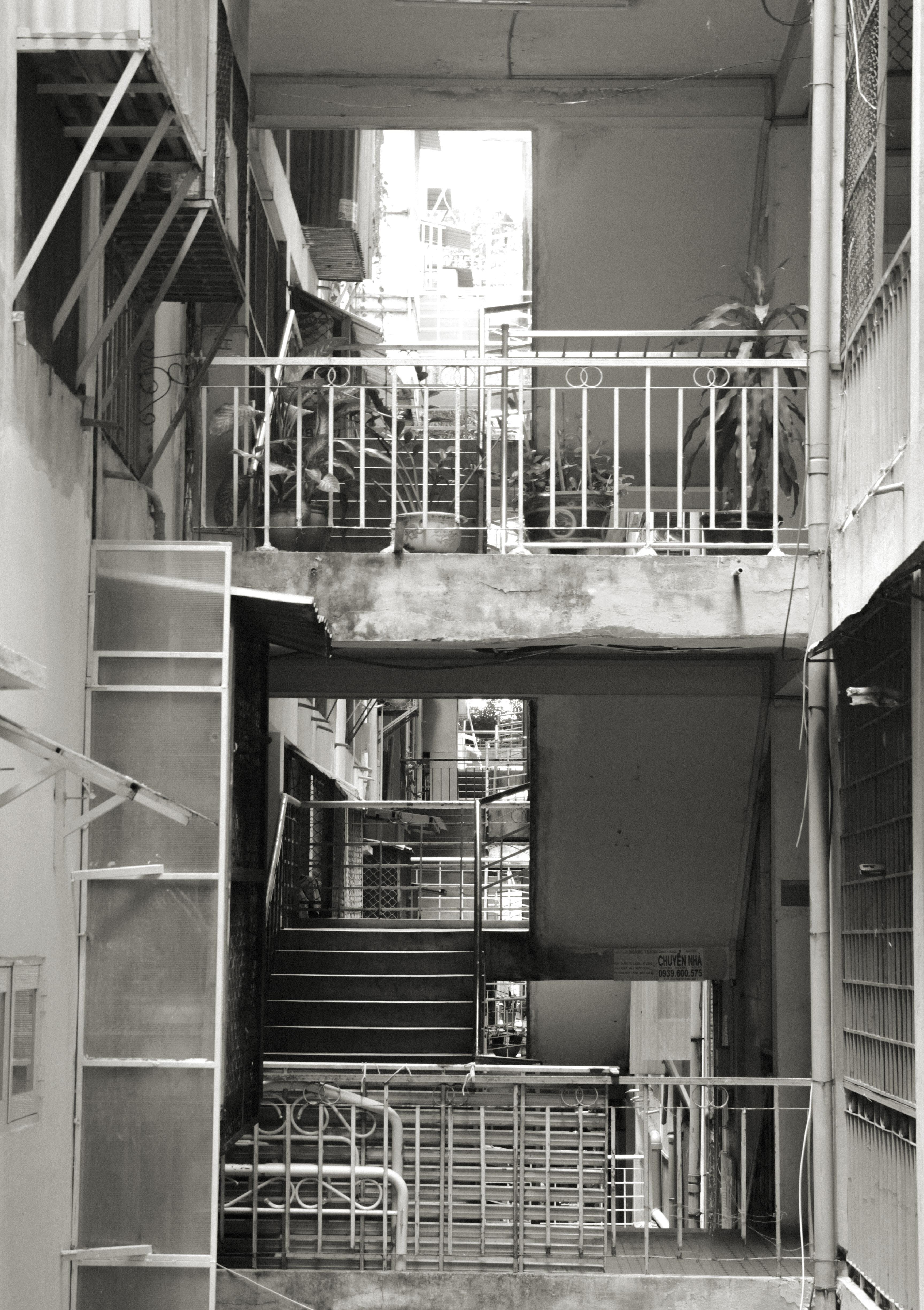
t he embodiment of historical aspect and modern inherritage
